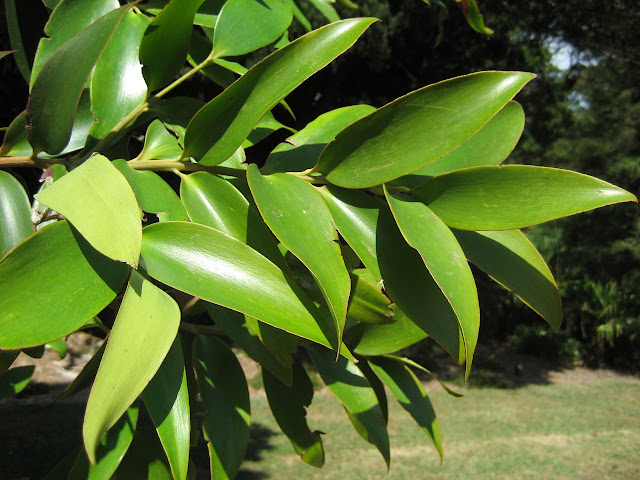PLANT OF THE WEEK
Kauri Pine: Agathis robusta-an Australian native
Over the last few weeks in this segment, we’ve been talking about big, big trees, and today’s offering is no exception.
Over the last few weeks in this segment, we’ve been talking about big, big trees, and today’s offering is no exception.
Kauri pine, like it's name states, is a conifer in the Araucariaceae family.
Also considered a dinosaur tree because it evolved millions of years ago when Australia was largely subtropical all over and not just in Queensland.
So let’s find out more.
I'm talking with Adrian O”Malley, horticulturist and native plant expert.
Also considered a dinosaur tree because it evolved millions of years ago when Australia was largely subtropical all over and not just in Queensland.
 |
| Kauri pine: Agathis robusta |
So let’s find out more.
I'm talking with Adrian O”Malley, horticulturist and native plant expert.
Big trees in pots:
- The Kauri pine is quite happy in pots if you have limited space.
- Just need to be root pruned every couple of years, but no more than 10% all round.
Being an ancient conifer it comes from an era when the world was much wetter and rainforest covered all of Australia.
The tree has big wide, leathery leaves with parallel veins. Leaves are in opposite pairs and 5-12cm long. The bark is smoothish, grey or a sort of grey brown.
 |
| Leaves of kauri pine, no mid-rib. |
The lower part of the trunk is free of branches, having dropped off as it grows.
The pine cones come in to shapes. Male cones are long and narrow, but female cones are rounded, 8-13cm in diameter.
 |
| Agathis robuasta female cones |
- The Queensland Kauri is a little known but magnificent specimen, that dates back to the mid-Jurassic period.
The wood was used to cabinetry, floorboards, kitchen sinks, and boat building during the 1920's and 30's.
If you have any questions either for me or for Adrian, why not write in to realworldgardener@gmail.com
- Geelong Botanic Gardens have an avenue of Kauri pine trees planted around the 1860's.
- Sydney Botanic gardens have one large specimen not far from the kiosk and close to the giant Dragon's Blood tree.
If you have any questions either for me or for Adrian, why not write in to realworldgardener@gmail.com




























